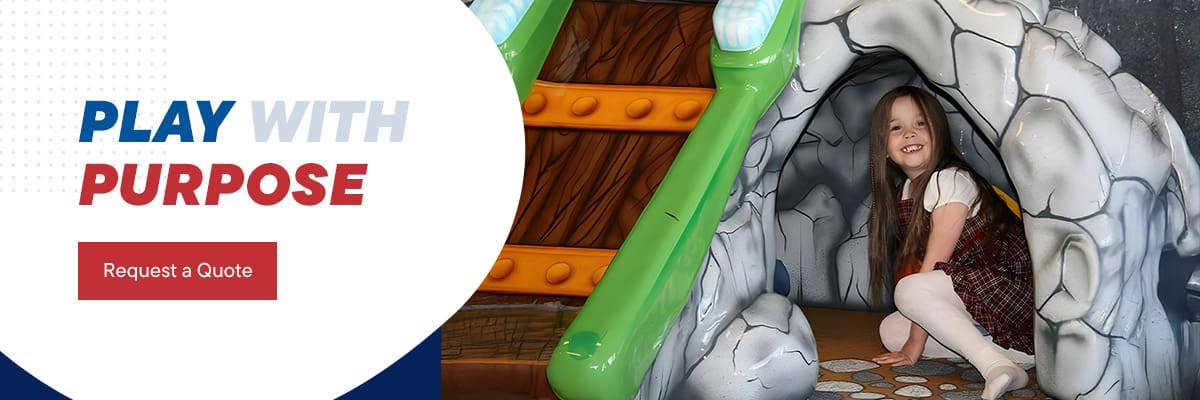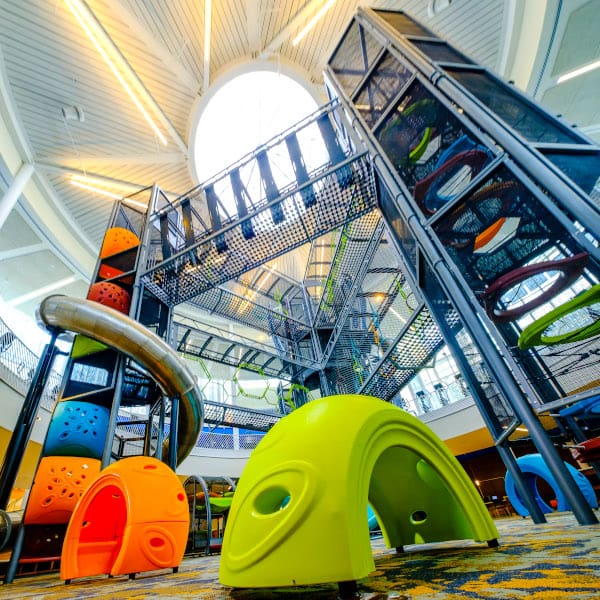The Impact of Design on Children’s Mental Health Facilities
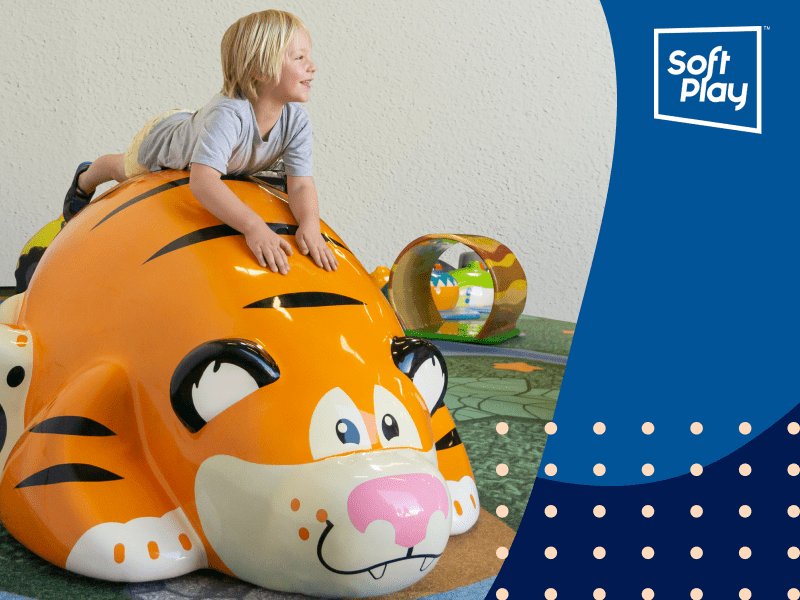
The Impact of Design on Children’s Mental Health Facilities
Many healthcare facilities have undergone a significant transformation in recent years. Most medical environments once had a cold, clinical design and feel, a natural result of needing to prioritize a sterile environment.
When it comes to mental health — especially for kids — traditional medical practice designs can actually have an adverse effect on well-being. These overly sterile designs can make kids feel more anxious, fearful, down and overwhelmed.
Thankfully, the right designs have the power to positively influence mood and well-being. Discover more about pediatric design and how to create supportive, playful environments for children’s mental health spaces.
Why Design Matters in Pediatric Mental Health Facilities
For kids, stays at or visits to healthcare facilities can be traumatizing and potentially lead to aggressive behavior, disrupted sleep and separation anxiety.
How a kid feels about their stay in the hospital depends on many complex factors, but the influence of the environment on their emotional and mental well-being can greatly contribute to the experience. A thoughtful pediatric design can help bridge the gap between care and comfort and can offer the following benefits for mental health outcomes:
1. Provides a Sense of Comfort and Safety
Thoughtful designs with intuitive layouts, soothing colors and engaging components can create a sense of safety and comfort for kids. Designs that have elements of safe spaces like home and school playgrounds can help kids feel more at ease. Feeling safe and comforted is vital for kids dealing with mental health issues.
2. Reduces Feelings of Anxiety and Stress
You can create a more tranquil environment for kids by using calming colors and prioritizing natural light. Exposure to natural light is essential for physical and mental well-being, so it makes sense to include this element in designs. It helps aid sleep, vision, mood, concentration, focus and energy levels.
3. Promotes a Positive Healing Experience
An intentional design can support positive healing and recovery. The environment a facility creates can impact healing, whether kids are only consulting there or have an extended stay.
When your team designs an area that is welcoming, soothing and kid-friendly, it sets kids up for a better experience and healthier frame of mind. Building a space that boosts how kids are feeling emotionally and mentally is vital for aiding their mental health journey.
One effective way design can be beneficial in promoting healing is by prioritizing positive distraction. Positive distraction preoccupies kids and encourages positive thoughts. These design features can include elements of nature, inspiring art and play areas.
4. Encourages Social Interactions
The ability to socialize well can greatly impact a kid’s mental health. Social skills like the ability to share with other kids, express feelings and communicate are intricately linked to mental well-being. Strong social skills can help combat feelings of isolation and can boost a sense of belonging and happiness.
Your team can use design to encourage social interactions that help aid kids’ mental health. You can design play spaces that allow kids to engage with one another in various ways. A well-designed indoor play area creates a space for kids to socialize, have fun and break free of the routine of consultations and treatments.
Child-Focused Design: A Foundation for Healing
The heart behind the kid-focused design that facilitates better mental health care is prioritizing spaces that aid healing through a welcoming, accessible and inclusive environment. Kid-friendly architecture moves focus on nonclinical aesthetics to make the facility a more homely and vibrant place. Key principles of child-focused design include:

Well-Being First
Exploring designs for kids’ mental healthcare is important. However, it shouldn’t overshadow practical design that places a kid’s well-being first. Any components your team uses to create a kid-friendly space should be secure, made with nontoxic materials and feel intuitive for kids to use. For example, play area components should be soft and not have sharp edges or dangerous protrusions. Additionally, no components should in any way hinder medical staff from performing their duties.
Comfort as a Priority
Your team can use components to create a more inviting and positive atmosphere for kids in healthcare facilities. All kids need to feel welcome, valued and secure — especially those facing mental health challenges.
Consider the following elements for designing a space that is welcoming and comfortable for kids:
- Use cheerful colors and age-appropriate interior design for mental health facilities to be more inviting.
- Use comfortable seating and soft indoor play components to make these areas more comfortable.
- Design with a degree of privacy in mind. Knowing they have their own little haven to retreat to can make the facility far more homely and comfortable for kids.
- Provide amenities that kids will love, like interactive play areas.
- Don’t neglect spaces like restrooms — these areas should be kid-friendly, too.
Age-Appropriate Features
Age-appropriateness is an essential factor in all kid-focused designs. You can incorporate the following elements to ensure your team creates age-appropriate mental healthcare spaces:
- Child-proof areas that are free of hazardous materials and sharp edges.
- Fully-secured areas that are appropriate for kids who need extra supervision.
- Indoor play areas with soft components and interactive elements.
- Quiet rooms and therapy rooms for art, music and other forms of creative expression.
- Family rooms that support parental needs, including private meeting spaces and even changing rooms for parents attending with little siblings.
- Flexible spaces for various needs, including social interactions, quiet rest spaces, therapy, family bonding and exercise.
Therapeutic Play Spaces: Encouraging Healing Through Play
Play has powerful therapeutic benefits that can aid kids’ mental health journey. The greatest benefit of designing therapeutic play spaces is that play is an integral and natural part of a kid’s development. Play is a vital part of childhood that provides kids with skills that are crucial to their growth, including:
- Building confidence and self-esteem
- Teaching social skills and communication
- Developing independence and curiosity
- Learning how to cope with challenging situations that build resilience
Play is fundamental to every kid’s growth, but the health benefits of playing are something truly exceptional when you make it a natural part of therapy. Designs that prioritize therapeutic play spaces provide kids and caregivers with the following benefits:
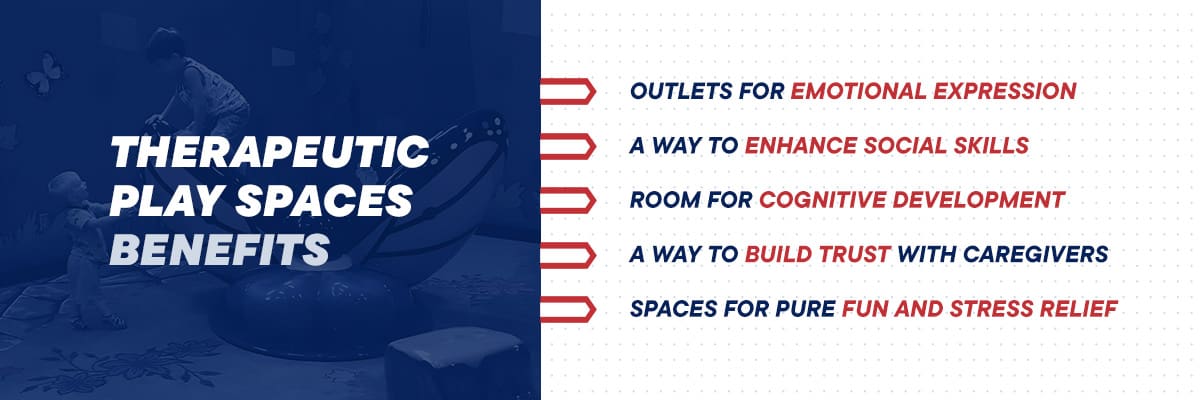
- Outlets for emotional expression: Many kids struggle with their emotions. This is a normal part of development as they learn to self-regulate them. For kids facing mental health concerns, expressing emotions can be even more challenging. Therapeutic play spaces provide an organic way for kids to explore big emotions and process trauma and feelings of anxiety, sadness and anger.
- A way to enhance social skills: Play naturally brings kids together. Through play’s social interactions, kids learn to resolve conflict, communicate, cooperate and develop friendships. The unassuming and organic environment of a play area is also ideal for kids struggling with social anxiety. A play area is an informal setting that allows kids to explore social interactions at their own pace.
- Room for cognitive development: Play is excellent for cognitive development. In turn, healthy cognitive development can support better mental well-being. Play naturally involves problem-solving and using the imagination. Therapeutic play areas can help kids discover new perspectives as they develop their critical thinking.
- A way to build trust with caregivers: Play areas help create a space that feels free, fun and safe. This relaxed and enjoyable environment can help kids establish trust with their mental health caregivers. Fostering this trust can help improve engagement and lead to better therapeutic results.
- Spaces for pure fun and stress relief: Facing mental health issues can be daunting and draining for anyone — especially a child. Therapeutic play spaces provide kids with a way to just be and have fun. Therapeutic play areas can help kids relax and let go of stress, whether the area prioritizes fun interactions or quiet ways for kids to express themselves.
Designing Interactive and Age-Appropriate Play Structures
Therapeutic designs have several key features that allow you to support kids’ mental health journeys. You can create an interactive play area by keeping the following aspects in mind:
Accessibility and Inclusivity
Accessible designs are vital for play areas that support kids of all abilities. Americans with Disability Act (ADA) guidelines provide measurements and requirements for entryways and seating areas, among many other standards. Using accessible surfacing is also key for ensuring the facility’s play area is ADA-compliant.
Accessible designs also contribute to play areas being more inclusive. Inclusivity is also a vital part of creating a play area that supports kids. Inclusive spaces make it possible for kids of all abilities, cultural backgrounds and ages to participate in activities.
Color Psychology
Your team can use color psychology in your designs to make some play spaces more interactive and engaging and other areas of the play area more calming and relaxing:
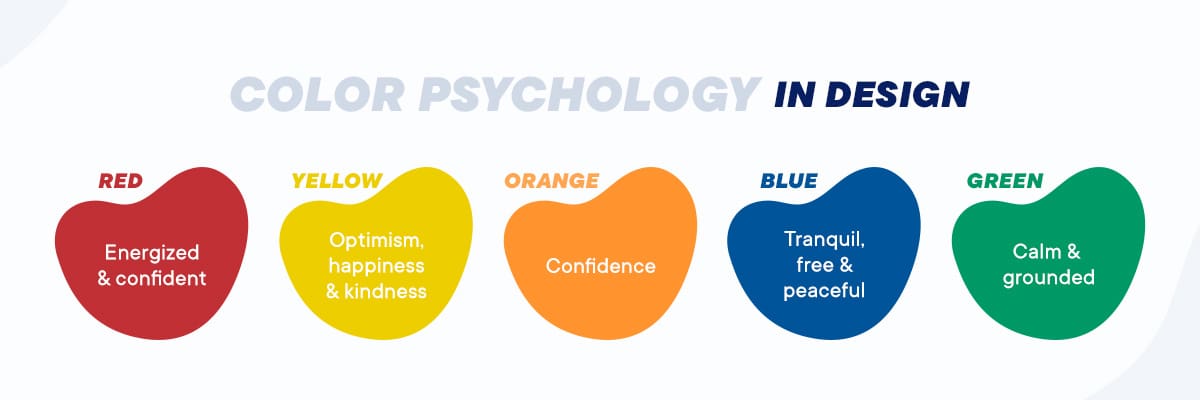
- Red: Red is a rich and engaging color that can help kids feel energized and confident.
- Yellow: Yellow is a vibrant color that is often associated with feelings of optimism, happiness and kindness.
- Orange: Orange can promote feelings of confidence.
- Blue: Blue is a tranquil color that reflects the sky and ocean. It can help anxious kids feel more free and peaceful.
- Green: Green also imitates natural elements like trees and grass. It can help kids feel calm and grounded.
Interactive Play Elements
For many kids, interactive and social spaces are key for supporting their mental health journey. Play structures can be more interactive by highlighting textures, sounds and problem-solving components.
Two examples of interactive play spaces that can support kids’ growth journeys include:
- Stomp Interactive Play: This fun component requires kids to stomp and jump to rake up scores. Stomp Interactive Play encourages kids to get physical exercise, which is linked to better mental health. The game is incredibly fun, too, which makes it perfect for stress relief.
- Hive Interactive Obstacle Course: The Hive has several interactive components that make it an engaging and social game. This dynamic structure has a striking visual appearance that instantly captivates kids. It also has a ball obstacle, adventure ropes, light sensors, a control station and a scoreboard.
However, play areas should be flexible, adaptable spaces. With an inclusive design, your team is mindful of the various mental health challenges kids are facing. Overstimulation is very real and challenging for neurodiverse kids, so an effective way to make a play area more inclusive is to include sensory-friendly spaces.
To achieve this, the play area’s design may feature quiet nooks for chatting or reading. Sensory-friendly spaces can also be less colorful, making use of soft pastels in tranquil colors like green and blue.
Biophilic Elements
An effective and helpful trend in mental healthcare design is incorporating biophilic features, or natural elements. It aims to enhance or deepen the relationship between people and nature. Nature can improve mental health by reducing stress and promoting feel-good hormones. Similarly, biophilic designs can help promote a sense of well-being and calm.
There are various ways to incorporate biophilic elements when designing play areas in mental healthcare facilities:
-
- Prioritize natural light.
- Include real plants.
- Choose play components that mimic natural materials like wood and stone.
- Select components that have natural shapes and forms — for example, components in the shape of logs, animals or trees.
- Add green surfacing to mimic grass.
- Prioritize views of nature.
- Use natural colors.
The Future of Kids’ Mental Healthcare Design With Soft Play®
Designing mental health facilities that support kids’ growth and healing has become more significant, and therapeutic play spaces are an integral part of the journey. Through meaningful architecture and planning, your team can ensure play areas promote mental and emotional well-being. Your facility’s play spaces can also be versatile enough to support kids of all abilities while supporting parents and caregivers.
If you have mental health facilities for children you’d like to transform, Soft Play can help. We have a professional team that works alongside you to design and create tailored, quality play areas for your establishment. We offer various custom play structures and components you can implement in healthcare facilities. In addition to our components, we offer safety surfacing and ADA-compliant equipment for more accessible and inclusive spaces.
Start designing your healthcare facility’s therapeutic play space today by contacting us for a free design consultation.
